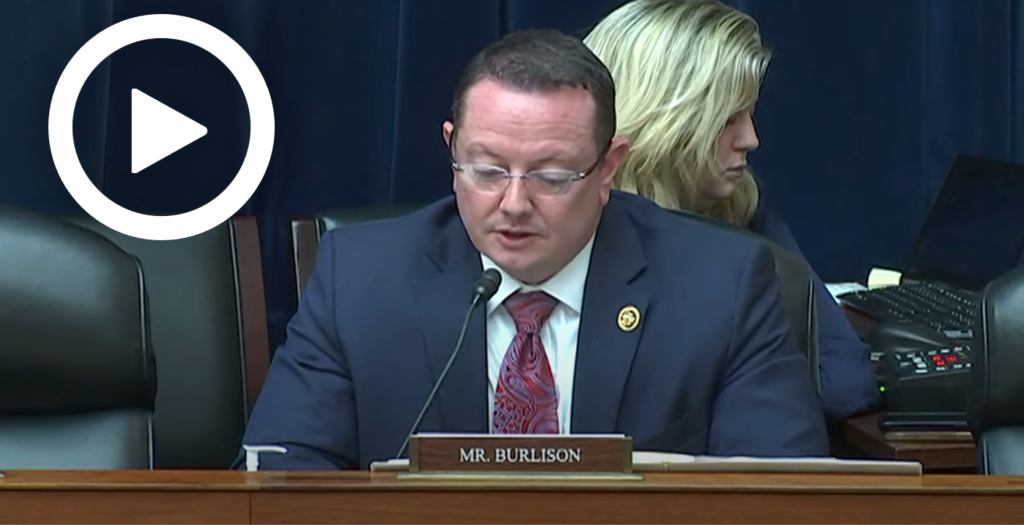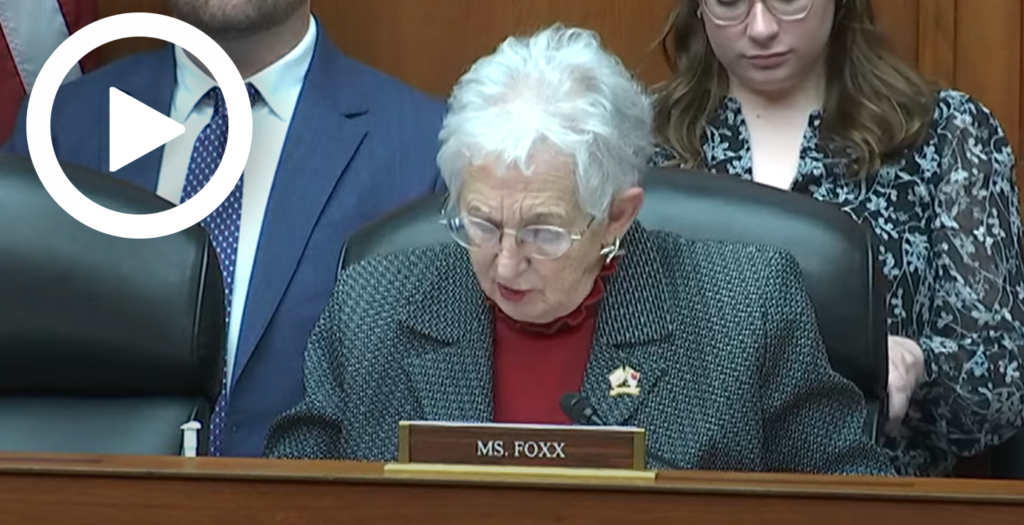Hearing Wrap Up: Billions of Taxpayer Funds to Aid Students Through School Closures Were Misused to Fund Left-Wing Political Agendas
WASHINGTON—The Subcommittee on Health Care and Financial Services yesterday held a hearing titled “America’s Report Card: Oversight of K-12 Public Education” to continue the Committee’s oversight of America’s public education system and the impact of pandemic-era policies on K-12 students’ educational outcomes. At the hearing, lawmakers examined how billions of dollars in taxpayer funds distributed to state educational agencies to mitigate the effects of COVID-19 on elementary and secondary schools and to help them reopen safely were frequently misused to support pet projects and left-wing political agendas.
Key Takeaways:
Public schools are struggling to perform their most basic task: educating America’s children.
- The Nation’s Report Card shows test scores in reading and math have significantly declined.
- Despite the well-known harms of school closures and ineffectiveness of remote education, Democrats continue to put politics before students.
- “The connection between closures and learning loss is clear. Education recovery scorecard and return to learn data show that in math, the most in-person third of districts lost 44 percent of a year’s progress. The most remote third lost 60 percent,” Dr. Nat Malkus, Senior Fellow and Deputy Director of Education Policy Studies at American Enterprise Institute said during his opening statement.
- “The President and governors, leaders on Capitol Hill, and in districts must decisively communicate that pandemic-era exceptionalism in schools is over,” Dr. Malkus continued.
School districts are increasingly investing in diversity, equity, and inclusion (DEI) programs instead of focusing on student performance.
- “The students that districts professed to prioritize when they purchase glossy SEL materials and expensive DEI inspired contracts were harmed the most by school closures,” Ms. Virginia Gentles, Director of the Education Freedom Center at the Independent Women’s Forum, said during her opening statement.
In 2020 and 2021, Congress appropriated roughly $190 billion for the Elementary and Secondary School Emergency Relief (ESSER) fund. Audits of ESSER funds have shown a high potential for waste, fraud, and abuse in these funds as they were intended to support students.
- “A common excuse for declining student performance, which began years before the COVID-era closures, is that schools are chronically underfunded. Yet, scores have plummeted to historic lows, despite the 190 billion federal elementary and secondary school emergency relief…” Ms. Gentles said.
Member Highlights:
Rep. Eric Burlison (R-Mo.) noted how taxpayer ESSER funds granted under the American Rescue Plan (ARP) were often misused and spent to support left-wing political agendas rather than rehabilitate struggling schools.
Rep. Burlison:“The [ESSER] money was often used inappropriately. There were far too many that used it for nonsense like DEI programs, critical race theory, gender ideology, and other woke programming.”
Rep. Burlison: “Will expanding school choice improve the student outcomes?”
Ms. Gentles: “Yes, there have been close to 200 studies of existing school choice programs. The vast majority of those do indicate that there are improvements not just in the participating students but in the public-school students in the surrounding area. Those competitive pressures improve the district services to the nearby students.”
Rep. Lisa McClain (R-Mich.) warned about the lack of transparent reporting plans for ESSER funds and emphasized the need to continue to audit how states and school districts have spent these funds.
Rep. McClain: “During the pandemic, we used ESSER funds to the tune of 190 billion dollars. Where were they spent, what programs were they used for, and did they help? Do we have a measurable outcome?”
Ms. Gentles: “Margaret Roza of Georgetown University has an economics lab and has done her best to go into the reports that are available from states and districts to assess how the money has been spent. Unfortunately, 20 states share no detail beyond how much money each district spent…”
Rep. McClain: “Do you know where the money was spent? Was it spent on tutoring and extended learning?”
Ms. Gentles: “No, most of it was spent on labor, so increasing the permanent staff, and on pay raises. A very small percentage was spent on tutoring, summer school, extended day.”
Dr. Malkus: “The answer is we don’t know. And we won’t know because there weren’t guardrails for these funds.”
Ms. Denise Forte, President and CEO of the Education Trust: “One problem we still have is not all the money has been spent.”
Rep. Virginia Foxx (R-N.C.) discussed the Department of Education’s lack of focus on student learning loss and declining performance.
Rep. Foxx: “We’ve heard about how serious learning loss and chronic absenteeism are, but the Department of Education doesn’t seem to be focusing on this. Instead, it seems to be spending all its time pursuing radical far-left agenda items such as college loan forgiveness.
“Can you talk about how much work the Department is doing on learning loss compared to Democrat political priorities?”
Dr. Malkus: “There was an agenda that came out, I think it was 10 days, perhaps two weeks ago, where the administration and members of the domestic policy council pushed for high dosage tutoring and extended learning time and talked about chronic absenteeism to some degree.
“While those things are worthwhile, and I’m glad that they are paying attention to it, I don’t think those priorities are as focused on the K-12 challenges that we are facing and particularly showing the leadership that we need from the administration on chronic absenteeism.”
CLICK HERE to watch the full hearing.
READ MORE: McClain: The Left Put Politics Over American Students’ Education


